Hoi An has many bridges because it’s located at the confluence of 3 rivers: Thu Bon river, De Vong river and Truong Giang “Long river”. The distributaries of these rivers also flow around the city, creating a maze of waterways. This natural feature has been supporting local people trading activities, agriculture, fishing, and transportation.
The most famed bridge in Hoi An is the Japanese covered bridge (or simply Japanese bridge). It’s the emblem of Hoi An ancient town world heritage site and modern Hoi An city today. Bridges spanning the Hoai river (canal) and Thu Bon river provide perfect spots to see brilliant sunrise or sunset or simply, chill with cool breeze. Some bridges connect the town with islands. Far away from Hoi An, the Golden hands bridge is a top sight all over the country, thanks to its popularity in social media.
In this article, travelers will know all the bridges in Hoi An. The sister city Da Nang also is known for bridges, please read our guide to Bridges in Da Nang to have more information.
Read also:
- Thanh Ha Pottery Making Village
- Hoi An Coconut Village
- Tra Que Vegetable Village
- Kim Bong Carpentry Village

Table of content
- 1 Hoi An Bridge: Japanese Covered Bridge
- 2 Hoi An Bridge with Hands: The Golden Bridge
- 3 Hoi An Lantern Bridge: An Hoi Bridge
- 4 Hoi An Moonlight Bridge
- 5 Hoi An Bridge with Dragon: The Dragon Bridge
- 6 Cua Dai Bridge
- 7 Cam Dong Bamboo Bridge
- 8 Cam Kim Iron Bridge
- 9 New Cam Kim Bridge
- 10 Nguyen Duy Hieu Bridge
- 11 Cam Nam Bridge
- 12 Related Posts
- 13 Bach Ma National Park: Hiking, Trekking in Da Nang and Hoi An
- 14 Hoi An Wet Season: What to Do in Hoi An When It Rains?
- 15 Thanh Ha Terracotta Park
- 16 Vinwonders Nam Hoi An Theme Park (formerly Vinpearl Nam Hoi An)
- 17 Am Phu Cave Complete Travel Guide
- 18 Hoi An or Hue: Which is Better?
- 19 The Official Hoi An Travel Guide (MUST READ)
- 20 The Hoi An Market (Hoi An Central Market) Complete Guide
- 21 Hoi An Memories Show: The Best of Hoi An Impression Theme Park
- 22 Hoi An Bridge: Famous Bridges in Hoi An
- 23 How to Get From Hoi An to My Son Sanctuary
- 24 Hoi An’s Chinese Assembly Halls and Chinese Temples
- 25 Hoi An Walking Tours: Heritage, Foods, Photography & Locals
- 26 Hoi An Self Guided Walking Tour (Hoi An By Yourself)
- 27 How to Visit Golden Bridge Vietnam
- 28 Unique Experiences in Hoi An and Why?
- 29 An Bang Beach: A Guide to Hoi An’s Best Beach
- 30 Experiences in Hoi An: Get Insight Into Hoi An’s Local Culture
- 31 Things to Do in Ba Na Hills Besides Golden Bridge
- 32 Hoi An Nightlife: What to Do in Hoi An At Night?
- 33 Hoi An Countryside: Villages, Rice Fields & Tours
- 34 How to Get to Golden Bridge From Hoi An
- 35 Hoi An Entrance Fee: Old Town, Golden Bridge, My Son, More
- 36 Hoi An Airport: Everything You Need to Know
- 37 Hoi An Lantern Boat Ride on Hoai River
- 38 Hoi An Private Car and Driver
- 39 What to Do in Hoi An Ancient Town
- 40 Da Nang and Hoi An Itinerary for Visitors Staying Overnight in Hoi An
- 41 Hoi An 3 Day Itinerary: A Travel Plan for 3 Days in Hoi An
- 42 Hoi An Free Things to Do: Budget Travel in Hoi An Vietnam
- 43 Hoi An One Day Itinerary: A Travel Plan for One Day in Hoi An
- 44 Hoi An Half-Day Tours: Guide to Half Day Trips From Hoi An
- 45 Hoi An Day Tours: A Guide to Best Day Trips From Hoi An
- 46 Hoi An Beach: A Guide to All Beaches in Hoi An Vietnam
- 47 Hoi An Food Specialties
- 48 How to Get From Hoi An to Da Nang
- 49 Hoi An Cheap Things to Do: All Solo Travelers Need to Know
- 50 Hoi An Best Things To Do: Recommendations from Local Experts
- 51 Hoi An Things to Do: All What Can You Do in Hoi An Vietnam
- 52 Hoi An Things Not to Miss: A Guide to Must Do in Hoi An
- 53 Hoi An or Da Nang: Which is Better?
- 54 Hoi An Pottery Village: A Guide to Thanh Ha Pottery Village
- 55 Hoi An Ancient Town Tour
- 56 Hoi An Old Town Ticket: Price, Sellers, Included Sites, More
- 57 My Son Sanctuary Tour
- 58 Hoi An Lanterns: Festival, Making Class, Where to Buy, More
- 59 Hoi An Best Area to Stay: Guide to Where to Stay in Hoi An
- 60 Hoi An Weather by Month: Guide to Hoi An Monthly Weather
- 61 Hoi An River Cruise: Guide to The Best Boat Tour in Hoi An
- 62 Hoi An Old Town Boats: Guide to Boat Rides in Hoi An Town
- 63 Hoi An 2 Day Itinerary: Traveler Guide to 2 Days in Hoi An
- 64 Cham Island Hoi An
- 65 Hoi An Basket Boat Ride
- 66 Hoi An Coconut Village: A Guide to Cam Thanh Coconut Village
- 67 Hoi An Cham Temples: My Son Sanctuary & Quang Nam Temples
- 68 How to Get from Da Nang Airport to Hoi An
- 69 Da Nang to Hoi An: Best Da Nang Airport Transfer and More
- 70 Hoi An Tour Guide: How to Find a Private Tour Guide in Hoi An
- 71 Hoi An Ancient Town Attractions
- 72 Hoi An Old Town Map
- 73 Tra Que Vegetable Village
- 74 Hoi An Lantern Festival
- 75 Hoi An Night Market: A Thing to Do in Hoi An at Night
- 76 My Son Sanctuary Travel Guide
- 77 Hoi An Old Town Unesco World Heritage – Hoi An Travel Guide
- 78 Featured Tours and Experiences
- 78.0.1 Golden Bridge and Ba Na Hills Night Tour
- 78.0.2 Golden Hands Bridge Tour In Sunrise or Sunset (1/2 Day)
- 78.0.3 Cam Kim Island Bicycle Tour From Hoi An
- 78.0.4 Cham Island Tour From Hoi An (Group Tour)
- 78.0.5 Cham Island Tour From Da Nang (Group Tour)
- 78.0.6 Hoi An Vegetarian Food Tour
- 78.0.7 Hoi An Evening Walking Food Tour Through Laneways
- 78.0.8 Private Hoi An Basket Boat Tour (Shuttle Bus, Bicycle, Bike)
- 78.0.9 Half-day Am Phu Cave Tour (Private)
- 78.0.10 Hoi An Countryside Tour (Bicycle, Car, Electric Shuttle)
- 78.0.11 Da Nang Tour Package From Singapore
- 78.0.12 Hoi An Evening Tour From Da Nang with Lantern Boat Ride
- 78.0.13 Hoi An Walking Food Tour Through Laneways
- 78.0.14 My Son Sanctuary and Hoi An Old Town Tour with Thu Bon River Cruise
- 78.0.15 My Son Day Trip From Hoi An including Marble Mountains and Basket Boat
- 78.0.16 Half Day Hoi An City Tour With River Cruise
- 78.0.17 Son Tra Peninsula Tour with Marble Mountains (Private/Small Group)
- 78.0.18 Hue Day Trip From Hoi An with Hai Van Pass, River Cruise & Lunch
- 78.0.19 Hoi An Ancient Town and Countryside Tour (Bests of Hoi An Tour)
- 78.0.20 Hoi An Tour From Da Nang Airport (Private, Optional Lunch)
- 78.0.21 Hoi An Day Trip From Da Nang (Marble Mountains, Basket Boat, Old Town)
- 78.0.22 Da Nang City Tour From Airport (Private, Optional Lunch)
- 78.0.23 Hoi An City Tour with Lantern Class, Lantern Boat, Night Market & Local Food Sampling
- 78.0.24 Marble Mountains, Basket Boat Ride & Hoi An Old Town Walking Tour
- 78.0.25 Marble Mountains & Golden Bridge/Ba Na Hills Day Tour
- 78.0.26 Marble Mountains & Monkey Mountain Tour (Half-day, Private)
- 78.0.27 Private Golden Bridge Sunrise Tour (Half-day, Optional Lunch)
- 78.0.28 Hoi An Ancient Town & Golden Bridge Day Tour (Private/Small Group)
- 78.0.29 My Son Sanctuary & Golden Bridge/Ba Na Hills Day Tour
- 78.0.30 Private My Son Sanctuary Sunrise or Sunset Tour
- 78.0.31 Full Day Hoi An Ancient Town & Countryside Experience With Local
- 78.0.32 Full Day My Son Sanctuary & Hoi An Countryside Tour With Local
- 78.0.33 Full Day Hoi An Ancient Town & Coconut Village Experience
- 78.0.34 Son Tra Peninsula, Marble Mountains and Hoi An City Tour
- 78.0.35 Half-day Marble Mountains Tour from Da Nang or Hoi An
- 78.0.36 Da Nang Cave Tour (Half Day Underground Tour in Da Nang)
- 78.0.37 Hoi An Old Town & Lantern Making Class (Morning Tour, Half-day)
- 78.0.38 Full Day Bests of Da Nang & Hoi An Old Town Walking Tour
- 78.0.39 Full Day My Son Tour From Da Nang with Da Nang City Tour
- 78.0.40 My Son Sanctuary Tour From Hoi An or Da Nang With Local Guide
Hoi An Bridge: Japanese Covered Bridge
Main article: The Japanese Covered Bridge in Hoi An
The Japanese Covered Bridge (or the Japanese Bridge, Pagoda Bridge, Chua Cau, Lai Vien Kieu) is the iconic bridge of Hoi An. It was built by Japanese people in 17th century and later rebuilt by Chinese people. In one entrance of this bridge, there are two monkey statues (holding a peach) and two dog statues on the other side. Each couple represents a year in the zodiac calendar, telling us that the whole time to construct it is 2 years.
The temple behind the bridge is used to worship Bac De Tran Vu (the King of northern direction). He is a Taoist god who is able to control natural disasters and phenomena. Although this is a Chinese deity, Vietnamese people still come here to pray for luck, happiness and peacefulness.
In 1719, Nguyen Phuc Chu lord – the ruler of the land gave its name “Lai Vien Kieu”, meaning “the Bridge that Receives Guests from Afar”. As a symbol for exchange of different cultures and friendship, the Japanese covered bridge appears on Vietnamese currency worth 20,000 dong.
Hoi An Bridge with Hands: The Golden Bridge
Main article: The Golden Bridge Travel Guide
Golden Hands Bridge and its Location
The Golden Hands Bridge (or Cau Vang) is in Ba Na Hills, a well-known hill station 50 kilometers away from Hoi An. It opens to visitors in 2018 and after that, becomes a social media hit thanks to its unique, inspirational design. This pedestrian bridge has a wood-paved deck with golden handrails, holded by two massive stone hands. From above, the hands are like the hands of the Mountain God rising from the hill and dense jungles. The Golden hands bridge now is a dream place to visit for many travelers in the world.
Getting to Golden Hands Bridge from Hoi An
It takes visitors about 1 hour and 20 minutes to get to Ba Na Hills from Hoi An by car. And then, it’s needed to walk to cable car stations and take one cable car to reach the Golden bridge (via the shortest cable car line). Cost for a private car for 2 ways often is from 1,000,000 to 1,500,000 VND, depending on size of the car and providers. Read further details in https://centralvietnamguide.com/how-to-get-to-golden-bridge-from-hoi-an.
Golden Hands Bridge Tour from Hoi An
Because of the long distance and crowds, travelers often depart the trip to visit the Golden hands bridge in the early morning (around 6:30 am). A ticket reservation on the last day also helps them to skip the queues and go straight to cable car stations. Then, they are definitely some of the first visitors on the bridge. It’s possible to stroll and take some good photos without many people around. Other sights and activities in Ba Na hills will be done later (such as Fantasy Park). Of course, because they come to them before, so don’t spend too much time seeing or participating. So, an early departure is the key to avoid the crowds in the Golden bridge.
You can see details of our Golden hands bridge tour (1/2 day) via https://centralvietnamguide.com/tour/golden-hands-bridge-tour/.
Hoi An Lantern Bridge: An Hoi Bridge
An Hoi Bridge is a small, short bridge spanning Hoai river that is the heart of Hoi An old town. It’s exclusive for pedestrians and bicycles from 9 to 11:30 am, and 3 to 9 pm daily. This lovely bridge provides access to An Hoi island with new towns, evening markets, theatres and Pub street – a nightlife center of Hoi An.
In the night, from the top of An Hoi bridge, visitors will see an amazing view, a world of twilight lights. Lights are from colorful lanterns in houses by waterfronts, from boats and lanterns floating on the river, from candles in street vendors, and from the moon. Definitely, it is among the best spots to catch this Hoi An’s evening delight (the thing that makes travelers fall in love Hoi An!). In the full moon, the traditional lantern festival is organized. For that reason, the town is filled with dreamy, romantic lights from millions of lanterns. Once again, An Hoi bridge becomes a perfect place to enjoy and save the memories.
An Hoi bridge provides the shortest way to go to Nguyen Hoang night market, the largest of the kind in Hoi An. Visitors absolutely like to be here, to taste street foods, listen to live music, buy souvenirs and photograph at lantern shops. In another corner, the Hoi An Lune Center provides the finest cultural shows in town. Its production team gained many international and national prizes.
Hoi An Moonlight Bridge
The Hoi An Moonlight Bridge (Cầu Ánh Trăng) is the shortest way to walk to the Hoi An Memories Land where the Hoi An memories show is performed. It has been used only for pedestrians (tourists) since it’s inaugurated in April 2022. On the city side, it connects with Tran Quang Khai St and Huyen Tran Cong Chua St. From the Hoi An fabric market, visitors need to walk 850 meters along these streets to get it. Taxi and electric shuttle buses are also easy to see and take, for a short transfer.
This walking bridge has a unique design that is inspired from the monthly full moon festival in Hoi An. Opening for visitors from 5 to 10 pm (except Tuesday), it shows its best at night when golden lights are turned on. At the top of the bridge, it’s possible to see and photograph a world of colorful lights, including cruises and floating lanterns on the river. Furthermore, the surface of the bridge is glass-bottom, helping to increase visitor’s experience. Small shimmering lights depict stars in the sky, so kids may like. By the bridge, there is a banyan tree which Vietnamese people think that it’s on the moon (not a rabbit in other cultures!).
Note: Only visitors who paid for Hoi An memories show (or the theme park) are allowed to walk on the bridge and take photos.
Hoi An Bridge with Dragon: The Dragon Bridge
Main article: The Dragon Bridge in Da Nang
The Dragon Bridge (or Cau Rong) is another famous bridge in Hoi An’s area. Exactly, it’s located in Da Nang city, 30 kilometers away. Inaugurated in 2013, this public traffic construction is known for its unique design, particularly its steel dragon. On the weekend, the dragon breathes fire and then water, making it become a popular attraction at night. It alone is yellow and photogenic, and that’s why it draws many travelers coming to take pictures.
Near the Dragon Bridge, visitors can see a collection of elaborate artifacts inside the Museum of Cham sculpture or try street foods and buy souvenirs at Son Tra night market.
Cua Dai Bridge
Spanning the estuary of Thu Bon river, Cua Dai bridge is the largest and tallest bridge in Hoi An. It provides traffic from Cam Thanh “coconut” village to the other side and causes the closing of a ferry. Constructed between August 2009 and March 2016, its length is 1,480 meters and its deck has 4 lanes, a median strip and two pedestrian paths. This bridge is a part of a coastal road project from Da Nang to Tam Ky city, the political heart of the province.
When standing on the top of Cua Dai bridge, visitors can see a spectacular view to the mouth of Thu Bon river. There are green freshwater bodies, blue sea, fishing boats docking around the fishing market, fishing nets, coconut forests, mangrove, and distant Cham islands. The colors are diverse. Many photographers come here to hunt stunning and inspiring pictures in the sunrise. They also don’t miss Duy Hai fish market to look for lively moments of life and different fish species.
On the other side (the city side), the scenery is peaceful. From there, it’s possible to view the entire Thu Bon river delta, until the horizon. That’s why visitors can see the mother river, its distributies, rice fields, villages, islands, and boats. Sunset is the best time to see all of these.
Cam Dong Bamboo Bridge
Cam Dong bamboo bridge is one of the last survivals of its type in Hoi An today. Reasons leading to this disappearance are the quick modernization in the countryside and floods. It’s located near Vinh Dien town, around 10 kilometers west of Hoi An. Local farmers use it to go to their farms and gardens from their homes. So, in the early morning (after sunrise) and late afternoon (sunset), it’s busy.
Cam Kim Iron Bridge
This iron bridge is one of the gateways to Cam Kim island (from Hoi An), the last untouched countryside in the city. It opened in 2016, giving inhabitants of the island more conveniences in their daily life. It is small, but still supports two way traffic. Pedestrians, bicycle and scooter riders are okay to move on it. However, the surface will be wet and slippery on rainy days (after rain) and often not easy for foreigners. Travelers can choose to go across the new Cam Kim bridge (from pottery village) instead, to keep safe. By that, the distance will be longer.
Iron Cam Kim bridge is popular for cycling tours from Hoi An to Cam Kim island. Sometimes, it’s skipped because tourists may use a ferry boat to cross the river.
New Cam Kim Bridge
The new Cam Kim bridge is a 740-meters-long bridge spanning Thu Bon river. It connects Hoi An with Cam Kim island, so it’s named Cam Kim bridge. On Hoi An’s side, there is Thanh Ha pottery village, a famous traditional handicraft workshop and its early morning fish market. On the other side, that is Triem Tay village (also known as the Bamboo village) with endless rice fields. If riding further, travelers will find the best motorbike route to get My Son from Hoi An.
Nguyen Duy Hieu Bridge
Opening to traffic in April 2022, this 242-meters-long bridge spans the Co Co river (or De Vong river), northwest of the town’s centre. It’s named “Nguyen Duy Hieu”, a local nationalist that was born in a nearby village. He was one of leaders for Quang Nam Nghia Hoi, an organization purposely to fight against French colonists in 19th century. In Hoi An, it’s possible to see his memorial statue in the park of Hoi An theatre and a road named the same (in the Ancient town).
Nguyen Duy Hieu bridge is a cable-stayed bridge, with two towers designed in the shape of sea palms (nipa palms). The palms grow in the surroundings, lining banks of the river. In Cam Thanh village, these plants form a vast forest. Locals there use basket boats to carry tourists on rivers and show funny performances. You can read more information about the activity in Hoi An basket boat ride.
Cam Nam Bridge
Cam Nam bridge is one of the bridges inside Hoi An’s ancient town. It provides access to Cam Nam island from the rest of the city and from the central markets. This bridge is an ideal spot to watch and photograph the sunrise or sunset. In the sunset direction, it’s possible to see the town with many boats, a market and a confluence of rivers. In the evening, people in the boats release lighting lanterns, making the view colorful and dramatic.
After Cam Nam bridge, travelers can walk to famous local restaurants selling hến xào (stir fried baby clams), bánh đập (rice papers and anchovy sauce) and chè bắp (sweet corn soup). All of them define the cuisine of Cam Nam island’s inhabitants. Not far away, travelers will find the entrance of the Hoi An Memories Land, to witness the Hoi An memories show.
Related Posts
Bach Ma National Park: Hiking, Trekking in Da Nang and Hoi An
Two best places for trekking and hiking in and near Da Nang are Son Tra mountain (peninsula) and Bach Ma national park. Which one is better is actually personal because these
Hoi An Wet Season: What to Do in Hoi An When It Rains?
No beach, no pool, no outdoor adventures? What to do in Hoi An when it rains? This is a very popular question from travelers who come to Vietnam in the
Thanh Ha Terracotta Park
Between 15th and 19th centuries, Hoi An was one of major stopovers for sailing merchants to trade in Southeast Asia. Meanwhile, craftspeople in its Thanh Ha village produce high-quality pottery
Vinwonders Nam Hoi An Theme Park (formerly Vinpearl Nam Hoi An)
In addition to historical and cultural attractions, nowadays Hoi An also has a couple of amusement parks to entertain. Definitely, they’re ideal places for families with children and groups of
Am Phu Cave Complete Travel Guide
Although in the Marble mountains – the most visited attraction in Da Nang, travelers often miss Am Phu cave. One of reasons is that it’s mentioned much online and not
Hoi An or Hue: Which is Better?
Both Hoi An and Hue cities are in the middle of Vietnam, and they’re not far from each other (about 130 km). Therefore, for those who travel from north to
The Official Hoi An Travel Guide (MUST READ)
By the estuary of Thu Bon river, Hoi An is one of the best places to visit in Vietnam. This Vietnamese town is a package for travelers – a pretty
The Hoi An Market (Hoi An Central Market) Complete Guide
The Hoi An Market is the first market in Hoi An ever. Over centuries, it’s still the largest market in town although the town has a much bigger size than
Hoi An Memories Show: The Best of Hoi An Impression Theme Park
The Hoi An Memories Show is a famous series of outdoor performances in Hoi An at the present time. Thanks to its exceptional production and great cultural stories, it becomes
Hoi An Bridge: Famous Bridges in Hoi An
Hoi An has many bridges because it’s located at the confluence of 3 rivers: Thu Bon river, De Vong river and Truong Giang “Long river”. The distributaries of these rivers
How to Get From Hoi An to My Son Sanctuary
My Son sanctuary is one of the most popular places to visit for tourists staying overnight in Hoi An, especially those who spend many days there. It’s known for a
Hoi An’s Chinese Assembly Halls and Chinese Temples
Chinese people migrated to Hoi An from the early 17th century. Today, Chinese communities as a whole are the second most important piece to form the town’s unique culture. The foremost
Hoi An Walking Tours: Heritage, Foods, Photography & Locals
Strolling around heritage quarters with a local guide is the activity that so many travelers love to do in Hoi An. It enriches their time in this lovely town. Firstly,
Hoi An Self Guided Walking Tour (Hoi An By Yourself)
Hoi An old town is friendly for pedestrians, especially during the time that motorized vehicles (scooters, cars, etc) are prohibited to move around its heritage quarters. That is safe for
How to Visit Golden Bridge Vietnam
The Golden Hand Bridge of Ba Na hills today is a dream place to visit for many travelers. Since it opened in June 2018, millions of people have set their
Unique Experiences in Hoi An and Why?
Today, travelers seek more experiences in the destination they go to. They want to have a deeper understanding about the culture of local people and interact with them. No other
An Bang Beach: A Guide to Hoi An’s Best Beach
An Bang beach now becomes a popular tourist attraction in Hoi An. It may be the best known and most convenient to reach from the town’s centre. Not only tourists,
Experiences in Hoi An: Get Insight Into Hoi An’s Local Culture
As the most unique Vietnamese town, Hoi An is definitely worth visiting. Here, visitors have many things to do and experiences for their holiday time. Everyone knows that it has
Things to Do in Ba Na Hills Besides Golden Bridge
According to local authorities, 50% of visitors coming to Da Nang and Hoi An visit the Ba Na hills. In other words, that is nearly 10 millions of people. This
Hoi An Nightlife: What to Do in Hoi An At Night?
After dark, Hoi An becomes exceptionally spectacular. If planning to stay overnight or visiting this ancient heritage town, at least travelers know that it’s “decorated” by so many colorful lanterns.
Hoi An Countryside: Villages, Rice Fields & Tours
By the coast, Hoi An is at the confluence of 3 rivers: Thu Bon river, Truong Giang river and De Vong river. This economically strategic location has supported trading activities
How to Get to Golden Bridge From Hoi An
There are many travelers visiting the Golden bridge from Hoi An. Both the bridge and the town today are must-see places in the region, so staying overnight in the town
Hoi An Entrance Fee: Old Town, Golden Bridge, My Son, More
Are you planning to visit Hoi An? And you don’t know how much cash you need to prepare for visiting places? This article lists tourist attractions in Hoi An and
Hoi An Airport: Everything You Need to Know
Hoi An is a famous tourist city in Vietnam. It’s 800 kilometers away from Hanoi, the capital of Vietnam and nearly 1,000 kilometers from Ho Chi Minh city, the biggest
Hoi An Lantern Boat Ride on Hoai River
A lantern boat ride is a thing to do that visitors must do today in Hoi An. For many centuries, locals have taken it on the Hoai river by the
Hoi An Private Car and Driver
Hoi An is one of the most popular tourist destinations in Vietnam. In the busiest year, it attracts about 9 millions visitors who come to enjoy its charming beauty, rich
What to Do in Hoi An Ancient Town
Hoi An Ancient Town is a must see, not only thanks to its world heritage title, but also to its vintage urban landscape, lots of attractions and activities. In the
Da Nang and Hoi An Itinerary for Visitors Staying Overnight in Hoi An
Da Nang and Hoi An are twin cities in the heart of Central Vietnam. Both are popular tourist destinations for either domestic or international visitors, and share many similarities. Due
Hoi An 3 Day Itinerary: A Travel Plan for 3 Days in Hoi An
3 days are a perfect duration to stay overnight in Hoi An and explore captivating places in and around it. Especially for those who travel from city to city or
Hoi An Free Things to Do: Budget Travel in Hoi An Vietnam
Travelers should know free things to do in Hoi An, to save the budget for this wonderful city and by that, can stay longer to explore. From old town, countryside
Hoi An One Day Itinerary: A Travel Plan for One Day in Hoi An
From a backwater town in the 1990s, Hoi An today is one of leading tourist destinations across Vietnam. In a recent year, it attracted 8,5 millions of overnight visitors and
Hoi An Half-Day Tours: Guide to Half Day Trips From Hoi An
Top attractions near Hoi An require a couple of hours or half a day, to get there and visit around. The reason is that all have many things to see,
Hoi An Day Tours: A Guide to Best Day Trips From Hoi An
Near Hoi An, there are many fantastic places making travelers can’t stay in the room and have to go out to explore. Appeal Golden bridge – the new world wonder,
Hoi An Beach: A Guide to All Beaches in Hoi An Vietnam
Not only an old town, Hoi An has beaches as well! That are sandy, edged by tropical water and lined by palm forests. Travelers don’t need to wait or move
Hoi An Food Specialties
Hoi An is a melting pot where people from different parts of Vietnam and countries in the world have gathered and exchanged their cultures. As a result, this town has
How to Get From Hoi An to Da Nang
Da Nang is the neighbouring city of Hoi An. It's the capital of Central Vietnam and has the most important (busiest) transport hubs of the region, such as airport, train
Hoi An Cheap Things to Do: All Solo Travelers Need to Know
Knowing free and cheap things to do in the city where travelers are going to visit, is helpful. First of all, they can save and, thanks to that, can stretch
Hoi An Best Things To Do: Recommendations from Local Experts
It is no coincidence that Hoi An is in the list of must-visit places once in the lifetime of many travelers. Located by a river, it’s borned to welcome people
Hoi An Things to Do: All What Can You Do in Hoi An Vietnam
Hoi An is in the bucket list of most travellers who plan to visit the Central part of Vietnam. It’s a lovely old and small town located downstream of a
Hoi An Things Not to Miss: A Guide to Must Do in Hoi An
In fact, there are so many things to do in Hoi An, one of the 10 best cities in Asia by Travel + Leisure in 2021. It has a lantern-filled
Hoi An or Da Nang: Which is Better?
Da Nang and Hoi An are located in Central Vietnam, with a distance of roughly 30 km. To the north, Da Nang is the capital city of the region, with
Hoi An Pottery Village: A Guide to Thanh Ha Pottery Village
Hoi An used to be a bustling, prosperous trade port during past centuries, before its role was replaced by Da Nang. Merchants from many countries on different continents came here
Hoi An Ancient Town Tour
Hoi An Ancient Town is a Unesco world heritage site by the mouth of the Thu Bon River. It has grid-plan streets filled by silk lanterns and bougainvillea flowers that
Hoi An Old Town Ticket: Price, Sellers, Included Sites, More
As an attraction including attractions, Hoi An Old Town requires an entrance ticket to tourists who come from other parts of Vietnam and the world. It raises funds for preservation of
My Son Sanctuary Tour
My Son Sanctuary is a Unesco world heritage site, attracting 450,000 visitors in recent years. It’s the best remains left by the fallen Champa Kingdom which ruled a part of
Hoi An Lanterns: Festival, Making Class, Where to Buy, More
Lanterns are the signature of Hoi An Old Town, the 3rd Unesco world heritage site in Vietnam. Especially at night, these traditional handicraft objects are lit up and make the town
Hoi An Best Area to Stay: Guide to Where to Stay in Hoi An
In the busiest year, nearly 5,5 millions travellers decided to stay overnight in Hoi An. It’s the largest number that a city in the Central coast of Vietnam ever achieved.
Hoi An Weather by Month: Guide to Hoi An Monthly Weather
Hoi An won the title “Asia’s leading cultural destination” recently in a reputable global travel award. It’s a pretty riverine-coastal town with an ancient root, surrounded by peaceful pieces of
Hoi An River Cruise: Guide to The Best Boat Tour in Hoi An
Hoi An town is by the left bank of the Thu Bon River, and by that, it draws plenty of merchants by sailing boat to visit and trade. Its golden
Hoi An Old Town Boats: Guide to Boat Rides in Hoi An Town
Hoi An town sits by the left bank of the Thu Bon River, the largest and most important waterway in mother Quang Nam province. It’s also near the mouth of
Hoi An 2 Day Itinerary: Traveler Guide to 2 Days in Hoi An
2 days are enough to know the highlights in Hoi An, a famous tourist destination in Central Vietnam. And for those who travel from city to city, 48 hours are
Cham Island Hoi An
The purple islands seen from An Bang or Cua Dai beaches are the Cham Islands. It’s one of the kind in the region where God bless it with fabulous beautiful
Hoi An Basket Boat Ride
Nowhere else outside of Hoi An Coconut Village, travelers can find a basket boat ride across the immense palm forests. It’s an experience that allows the passengers to know better
Hoi An Coconut Village: A Guide to Cam Thanh Coconut Village
Hoi An Coconut Village boasts of the most interlaced waterway system in the city. Four rivers encircle it and are connected together with smaller canals. Thanks to fertile alluvia and
Hoi An Cham Temples: My Son Sanctuary & Quang Nam Temples
Cham people settled in Hoi An before the Vietnamese arrived and handed it over in 14th century. Influenced by Indian culture, they called the land “Amaravati”, similar name to a
How to Get from Da Nang Airport to Hoi An
Located in the city of the same name, Da Nang airport is the nearest airport to Hoi An. So, if travelers want to see an extremely-colorful Lantern festival or try
Da Nang to Hoi An: Best Da Nang Airport Transfer and More
If traveling to Hoi An by air, train and cruise ship, visitors will come to Da Nang first and then have a transfer. The largest city of Central Vietnam holds
Hoi An Tour Guide: How to Find a Private Tour Guide in Hoi An
Most tour packages in Hoi An cover “ a guide”. He or she may be the first and closest local to the visitors, who lead the group to enjoy the
Hoi An Ancient Town Attractions
Spreading over an area of 30 hectares, Hoi An Old Town owns more than 1,100 timber buildings varying in function or type. In the oldest street, the Japanese bridge spans
Hoi An Old Town Map
There are so many things to see, do, eat and sleep in Hoi An Old Town, so the visitors often are confused while planning and exploring. Starting the research from
Tra Que Vegetable Village
Located in a prime location between two famous attractions, the Old Town and An Bang beach, Tra Que vegetable village is a featured point of interest. It’s famous for vegetable
Hoi An Lantern Festival
The Lantern Festival is amongst the best times to visit Hoi An. In which, visitors will immerse themselves in a shimmering world of uncounted lantern lights. When the crowds fill
Hoi An Night Market: A Thing to Do in Hoi An at Night
One of the most visited attractions in Hoi An is its night market. Because it is located right near the Old town, first-timer travelers commonly explore both top sights in
My Son Sanctuary Travel Guide
My Son Sanctuary is a complex of Hindu temples and a Unesco world heritage site from 1999. It’s 40 km away from Hoi An and 70 km to the southwest
Hoi An Old Town Unesco World Heritage – Hoi An Travel Guide
Situated 30km south of Da Nang, Hoi An ancient town is one of the best attractions in Central Vietnam. It is titled as the prettiest town of the country and



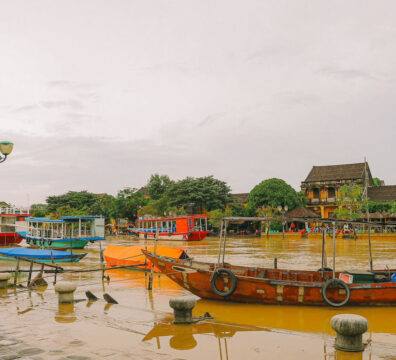
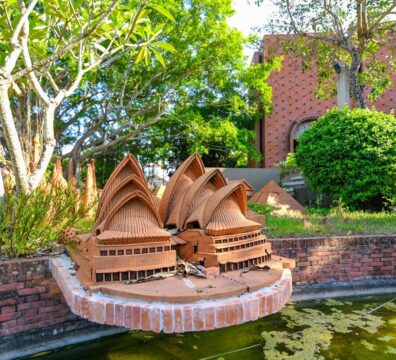



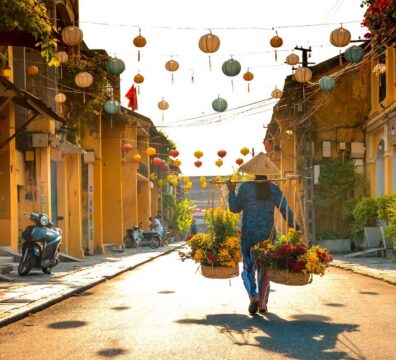


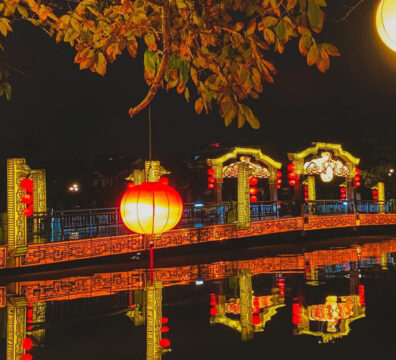
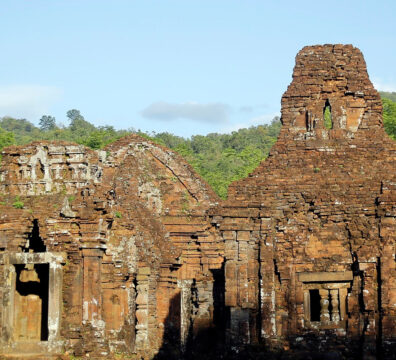


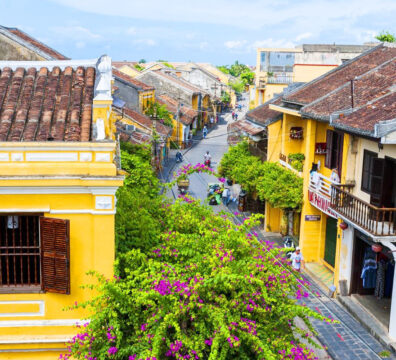







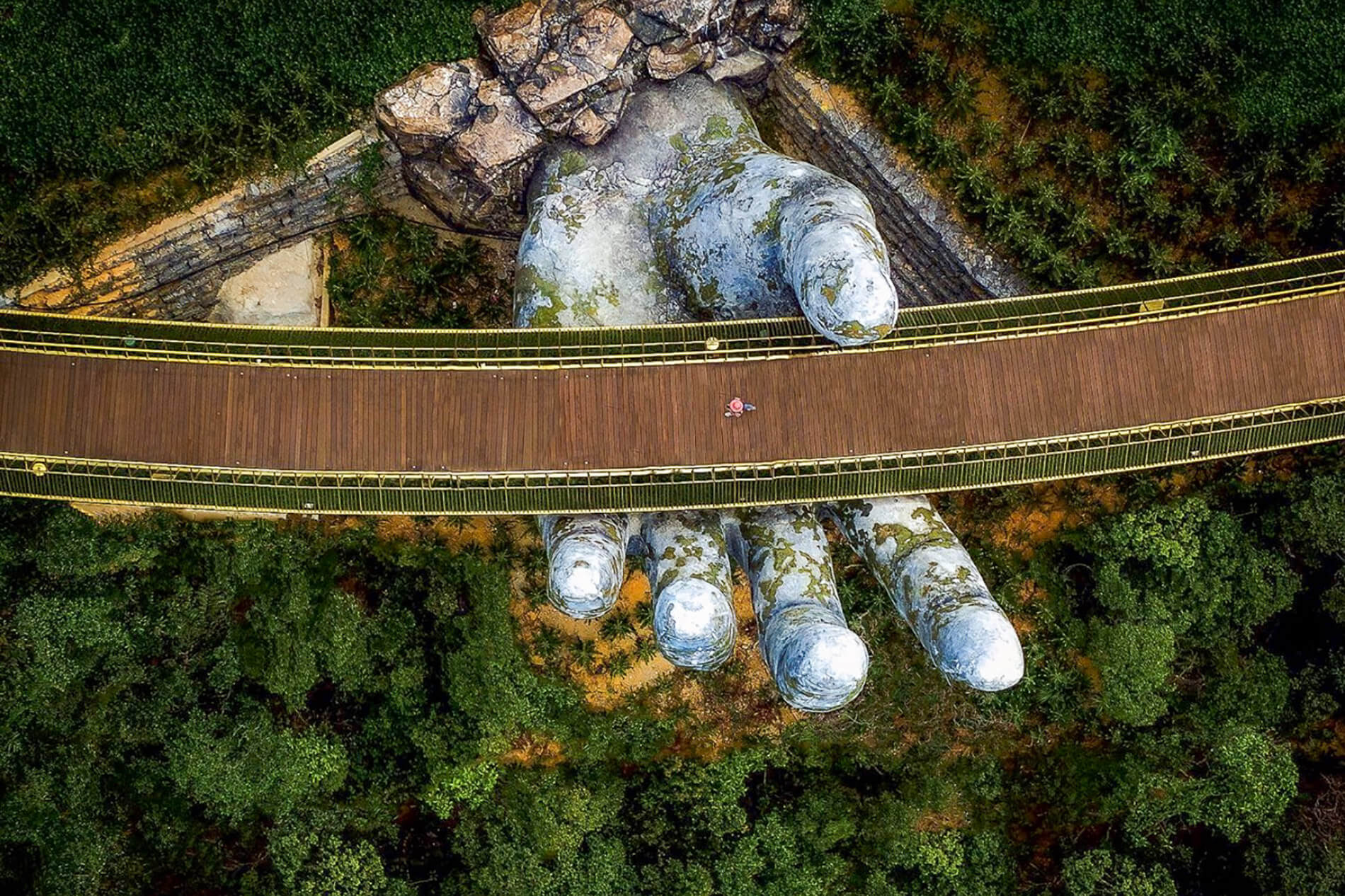







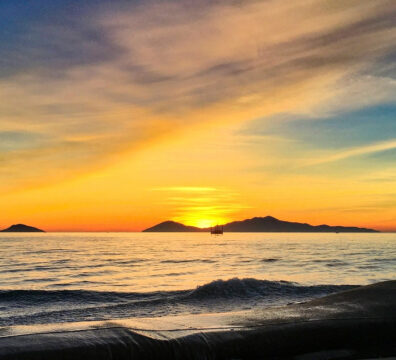



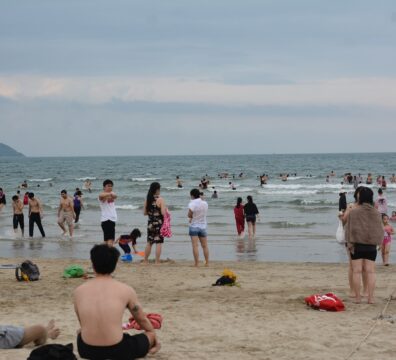

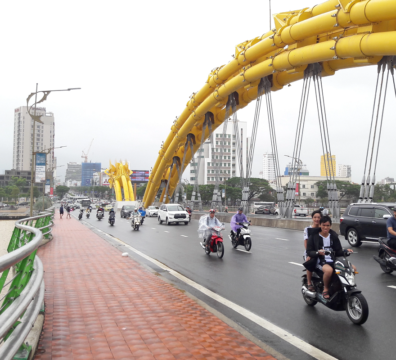









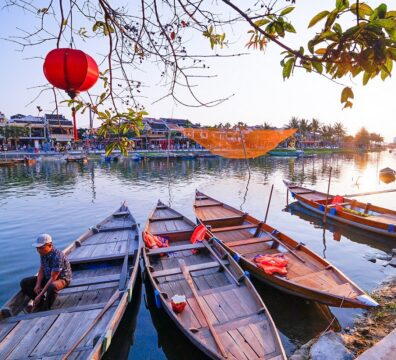


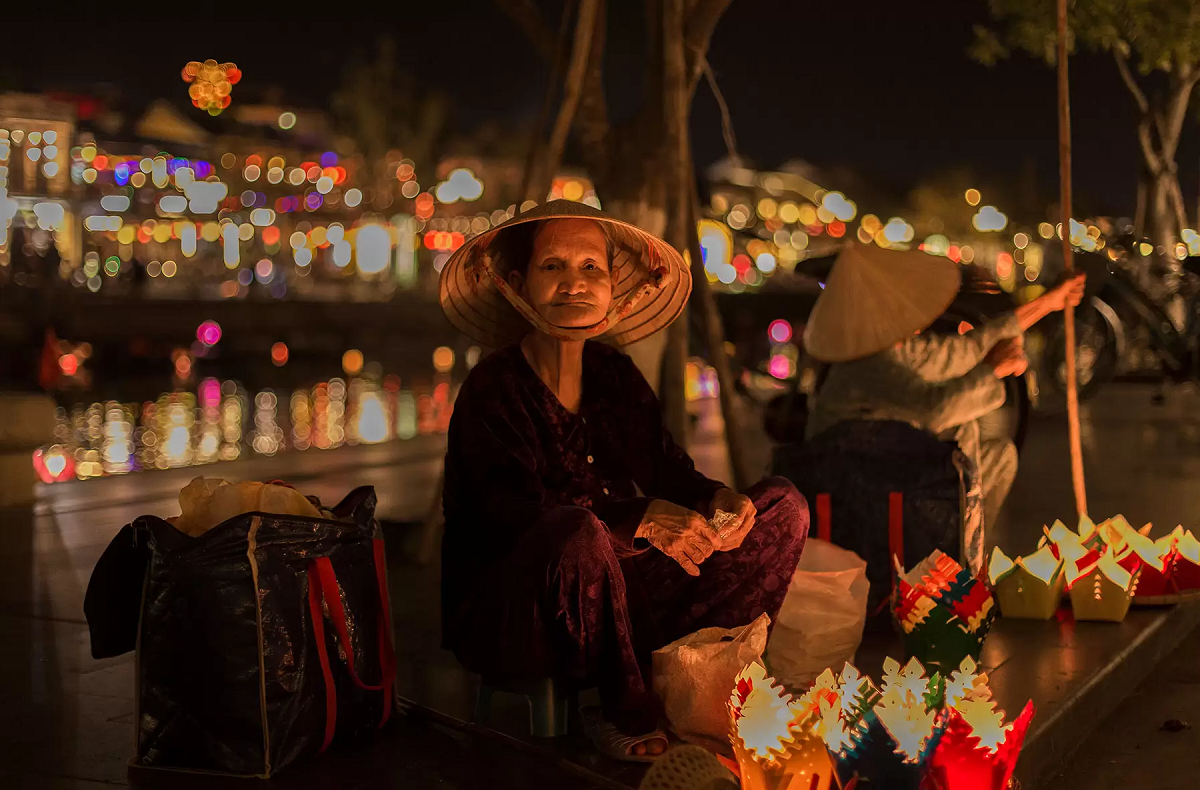








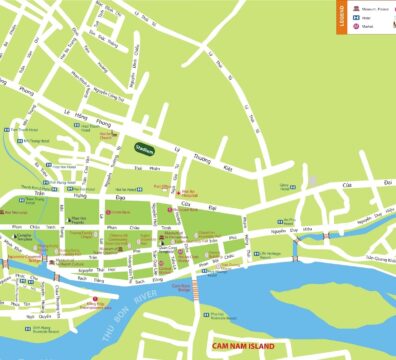

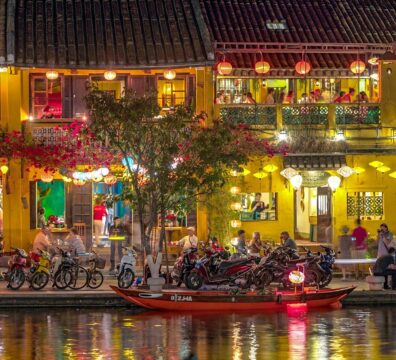
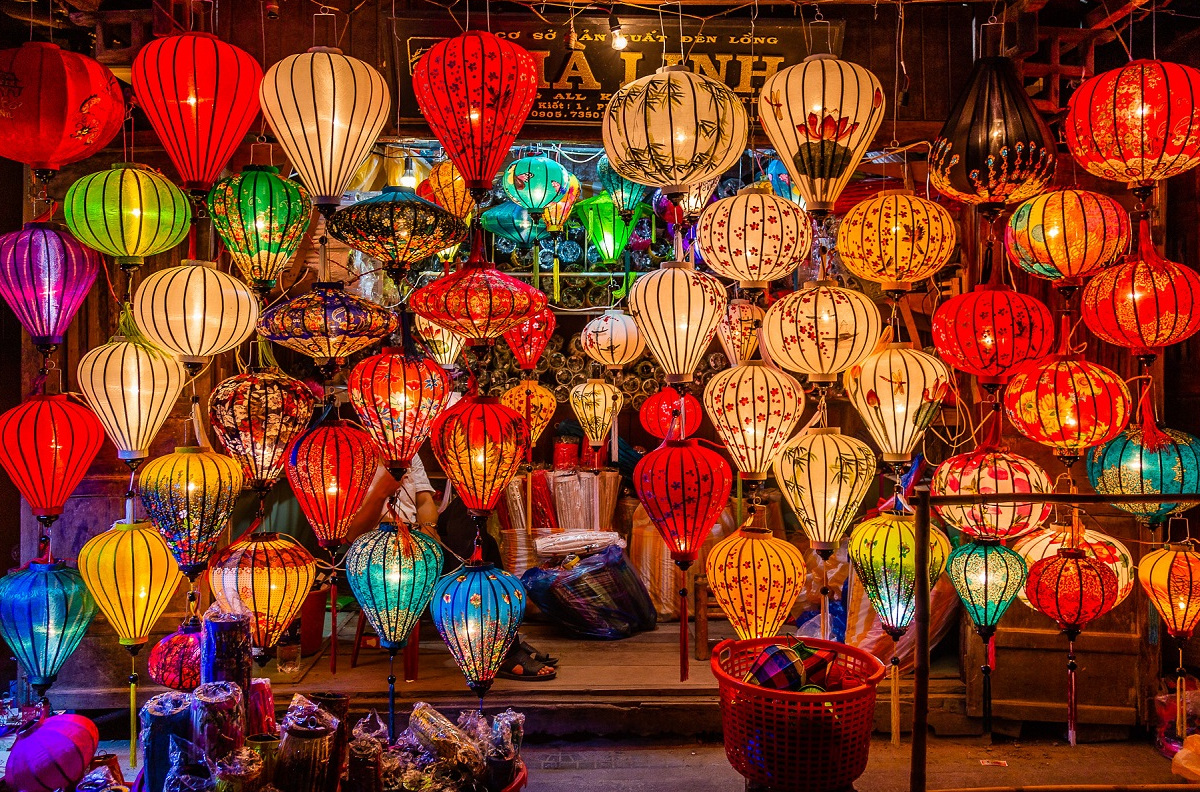




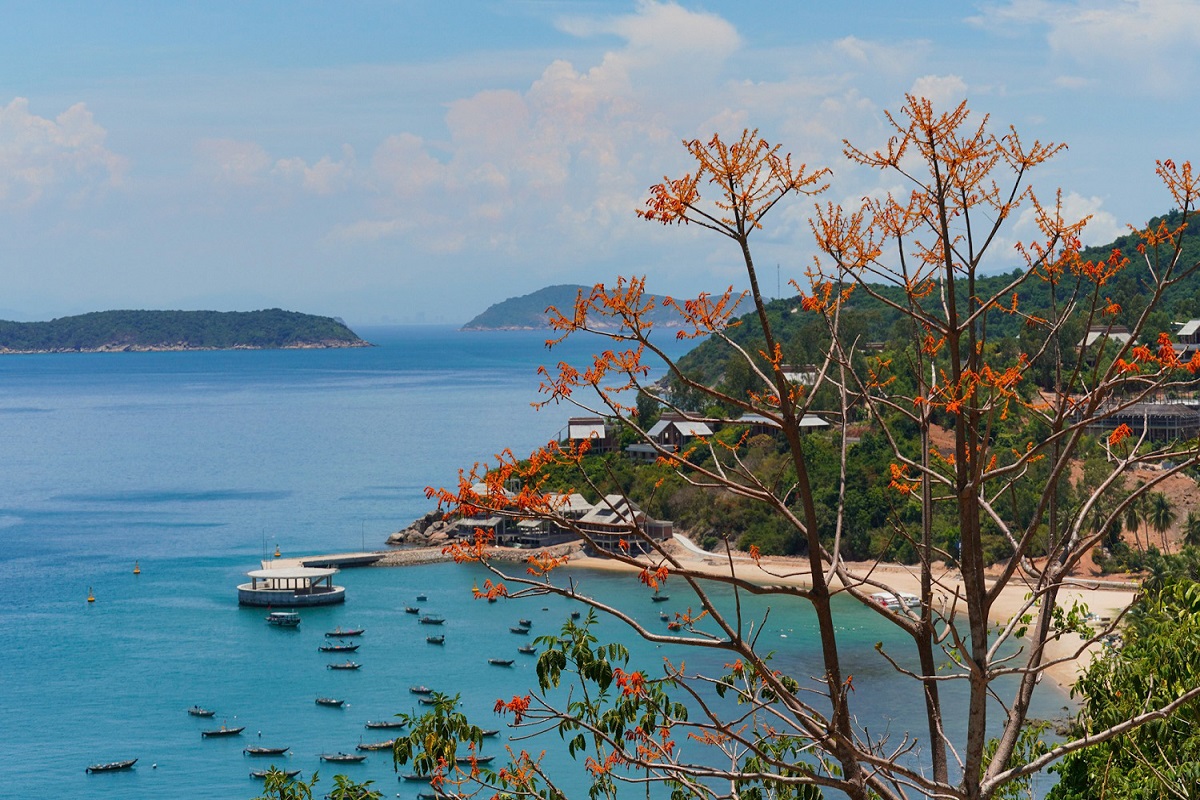








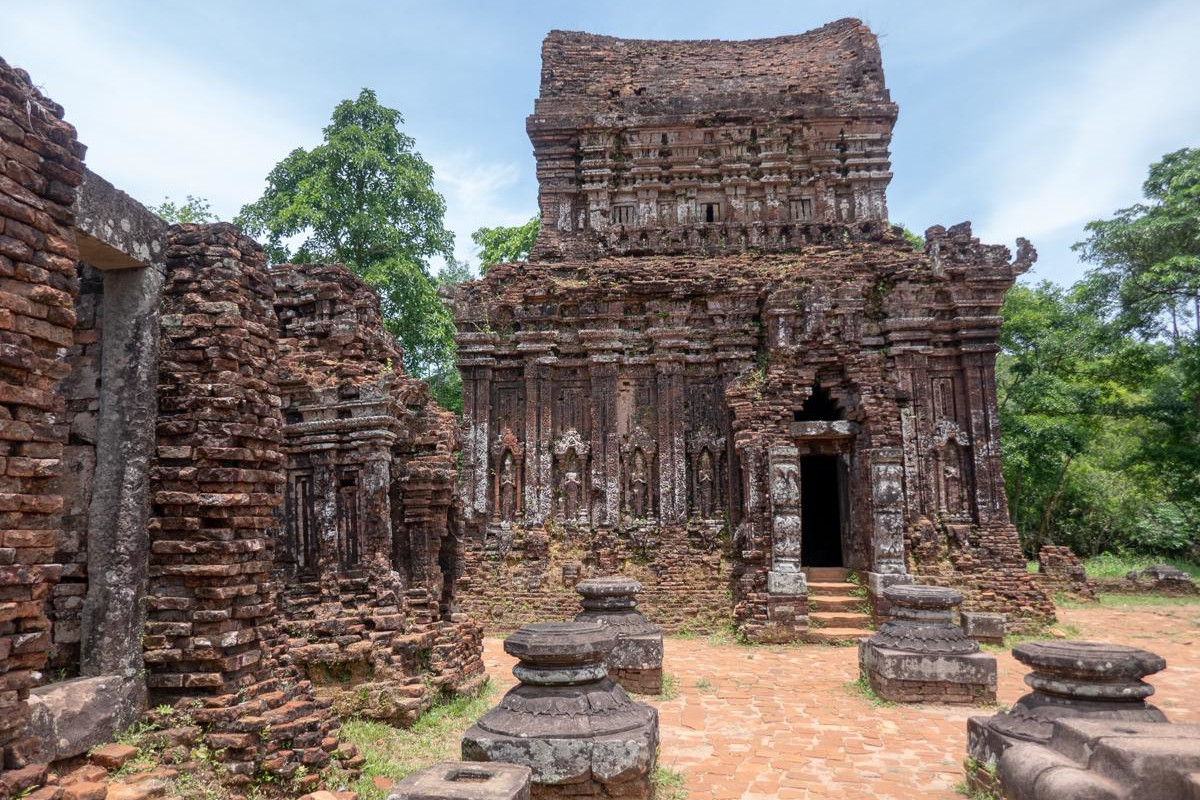

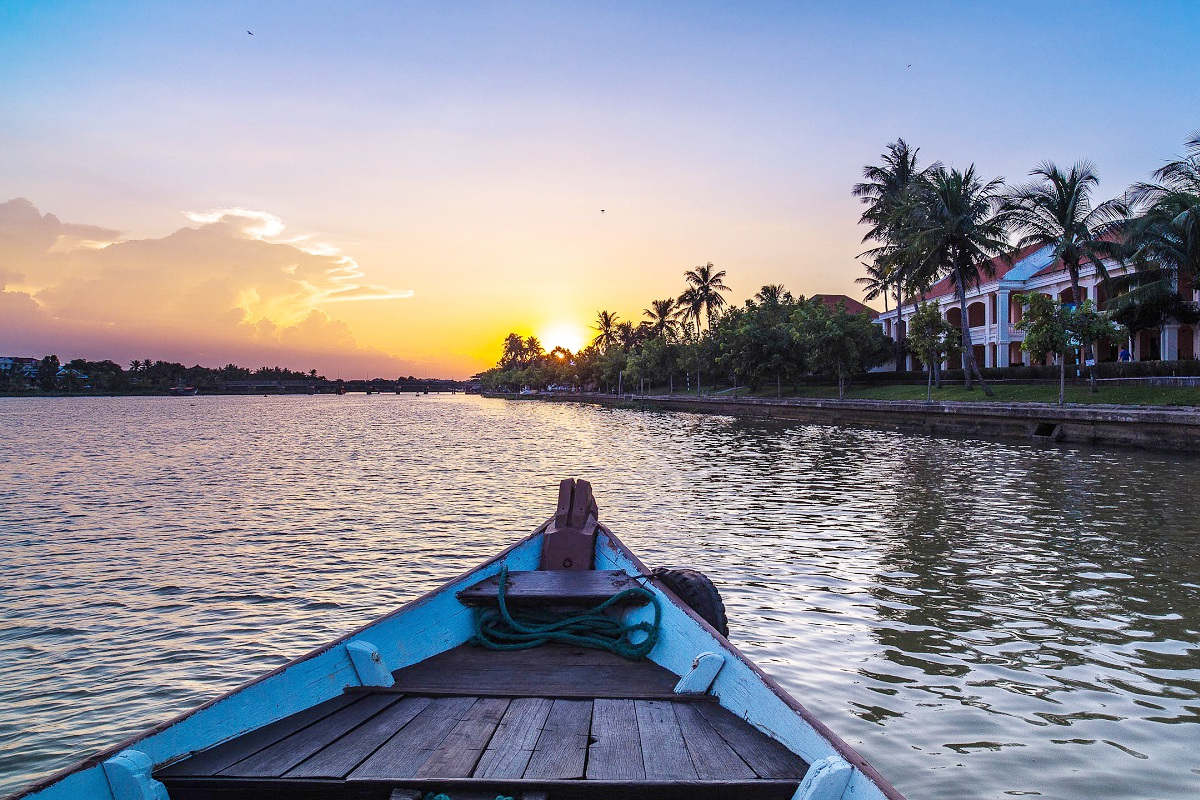





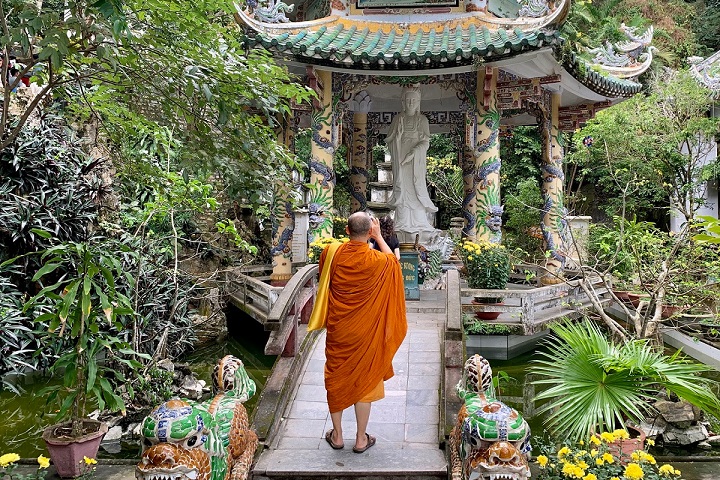


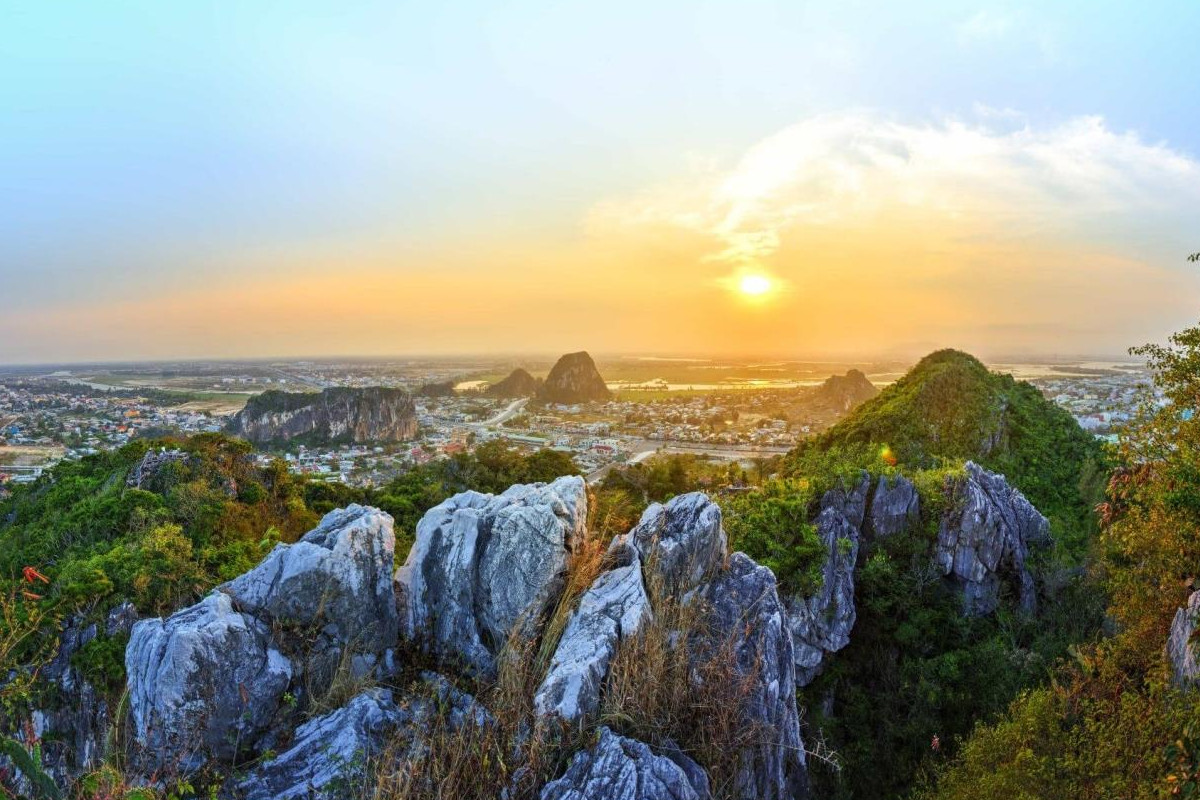
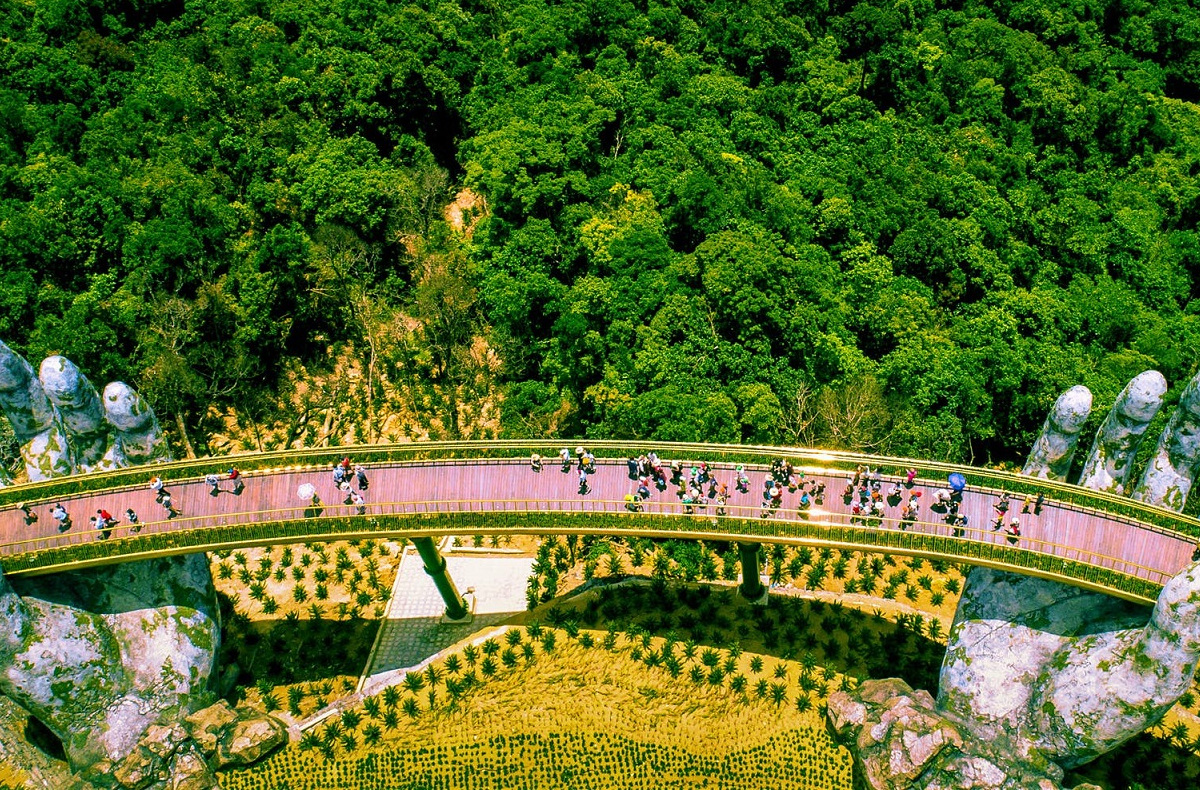














Leave a Reply